KARACHI: The Economist Intelligence Unit has ranked Karachi the second least safe city in the world after Myanmar’s Yangon on its Safe Cities Index 2021, with experts saying it wasn’t surprising given deteriorating health, security and climate conditions in the southern Pakistani port city.
The Safe Cities Index 2021 is the fourth iteration of the index, based on 76 indicators covering digital, health, infrastructure, personal and environmental security. The first such biennial report was published in 2015 but didn’t mention Karachi as it had only 50 cities.
In the next report published in 2017, the Pakistani port city was ranked as the least safe city, on 60th position. In the last index issued in August 2019, Karachi’s ranking improved and it was placed on 57th position, above Yangon, Caracas and Lagos.
This year, however, Karachi’s ranking dropped to 59 with 39.7 points in five categories. India’s New Delhi and Mumbai ranked 48 and 50, respectively. Copenhagen, Toronto, Singapore, Sydney and Tokyo are the top five safest cities in the world.
Health experts and analysts believe the grading is a reflection of reality. A spokesperson for the provincial government and the Karachi commissioner did not respond to repeated attempts to seek comment.
“The degradation is a reflection of the deteriorating situation of health in Karachi,” Dr. Qaisar Sajjad, secretary general of the Pakistan Medical Association, told Arab News. “We don’t see any steps which may make us see any better conditions in the future.”
Health and climate conditions had deteriorated with the passage of time, according to Sajjad, and the price of medical treatment had shot up manifolds in both public and private sector hospitals of the city.
“Government-run hospitals used to offer free treatment and would provide immediate health care, especially in case of emergencies,” Dr. Sajjad said, recalling a recent traffic accident at the city’s Liaquatabad flyover in which the injured died after four hospitals, two of them from the public sector denied him treatment. Government-run hospitals have also started charging heavily for tests and hospitalization, he noted.
Highlighting a lack of preventive steps by the government, the PMA secretary general said: “The sewerage system is fragile, pure drinking water is unavailable and there is abundance of mosquitos due to which health care facilities receive more patients of mosquito-borne diseases.”
Karachi has seen environmental degradation too and the city has transformed into a concrete jungle after massive cutting of trees, Sajjad said.
“There is noise and air pollution. Trash is not disposed of properly and it’s burnt instead. Car emissions are also adding to pollution in the city,” he said. “So, how can we be hopeful when we see deterioration in health and climate?”
In its report, the Economist Intelligence Unit said all categories were correlated and even when one was affected, it compromised the overall security of citizens. Experts agreed that all indicators presented a grim picture of the Pakistani port city and main financial hub.
“No serious efforts have been made for the security of the city,” Mazhar Abbas, a Karachi-based political commentator and analyst, told Arab News. “Around $124 million were spent on the safe city project in Islamabad, whereas $157 million were allocated for the Lahore Safe City Project. On the contrary, in Karachi, which is a much bigger city, only Rs600 million ($3.57 million) were spent to install cameras. It tells about our priorities for Karachi.”
Though a September 2013 paramilitary operation eliminated much violence from the city, no serious efforts had been made against street crimes, he said.
“Karachi is witnessing a surge in these crimes,” Abbas said. “Most of the criminals have been released on bail for as much as 12 times, but authorities don’t look at this issue scientifically.”
He said the dilapidated infrastructure was also adding to the lack of security for the city’s dwellers: “Karachi, which had few slums in the 1980s, is now home to over 8,000 shanty towns.”
The analyst said the Rangers paramilitary force had been deployed in Karachi as part of a temporary arrangement, but over the last several decades it started policing the city’s neighborhoods, while the police force was never reorganized or restructured to deal with modern-day challenges facing the city.
Experts call Karachi’s ranking as world’s second least safe city a ‘reflection’ of reality
https://arab.news/btvb5
Experts call Karachi’s ranking as world’s second least safe city a ‘reflection’ of reality
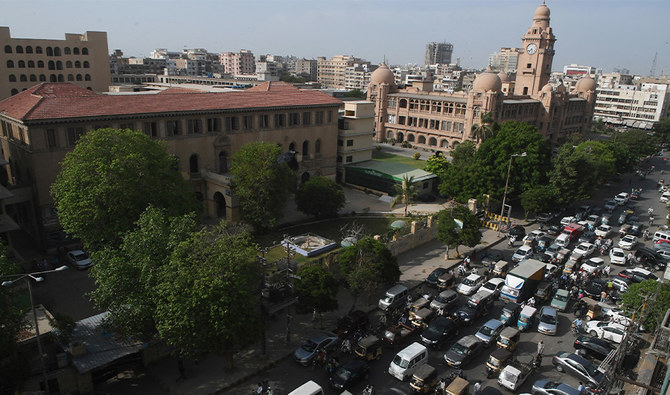
- Safe Cities Index 2021 is based on 76 indicators covering digital, health, infrastructure, personal and environmental security
- Experts agree that all indicators presented a grim picture of the Pakistani port city and main financial hub
Pakistan gears up for PM Sharif’s visit to China in May
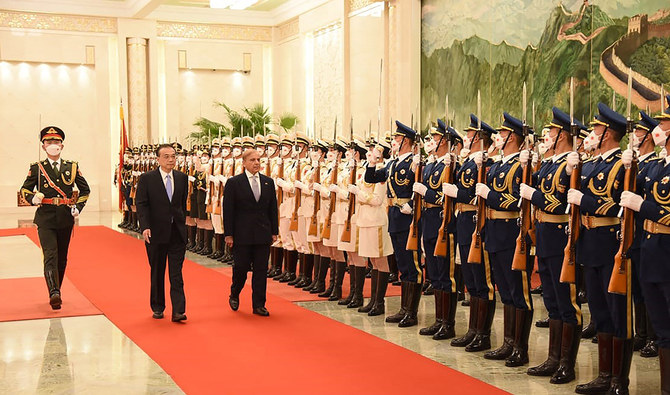
- Planning minister says China has invested $25 billion in infrastructure projects in Pakistan since 2013
- However, the undertaking has been affected by Pakistan’s financial woes, attacks on Chinese in recent years
ISLAMABAD: Pakistan is preparing for a possible visit by Prime Minister Shehbaz Sharif to China next month and the 13th meeting of a joint cooperation committee (JCC) on the China-Pakistan Economic Corridor (CPEC), the Pakistani planning ministry said on Friday.
The statement came after Planning Minister Ahsan Iqbal presided over a meeting with regard to the prime minister’s visit and preparations for the 13th JCC meeting.
Sharif is expected to visit China in May to restore Beijing’s confidence in Islamabad with regard to various Chinese-funded projects, Pakistani state media reported this month, citing a senior official.
“The federal minister said that the prime minister’s visit to China will be of great importance and China wishes that the 13th JCC [meeting] is held before this visit,” the Pakistani planning ministry said in a statement.
“So that projects, including five new economic corridors, can be accelerated and the desired results can be obtained from the visit.”
Beijing is investing over $65 billion in energy and infrastructure projects in Pakistan as part of CPEC, a major segment of Beijing’s Belt and Road infrastructure initiative, which will connect China to the Arabian Sea and help Islamabad expand and modernize its economy through a network of roads, railways, pipelines and ports in Pakistan.
Since its initiation in 2013, CPEC has seen tens of billions of dollars funnelled into massive transport, energy and infrastructure projects. But the undertaking has also been hit by Pakistan struggling to keep up its financial obligations as well as militant attacks on Chinese nationals in Pakistan.
From 2013 to 2018, Iqbal said, China invested $25 billion in Pakistan under CPEC that improved economic condition of the country.
He said his government was currently taking steps to implement CPEC projects and was determined to soon complete them.
Green glamor: Young Pakistani innovators transform electronic waste into fashionable jewelry
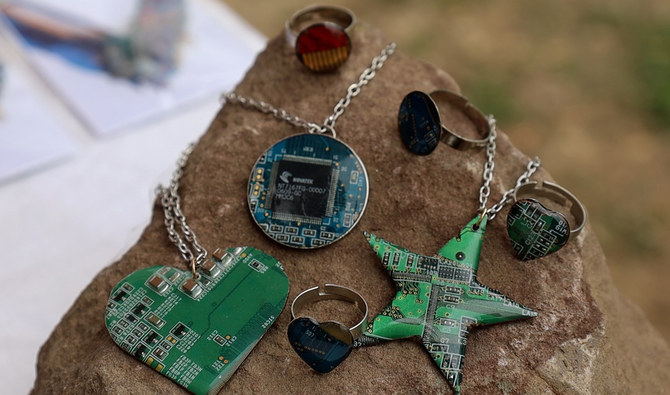
- Jewelry crafted from electronic scrap appeals to a young demographic that values innovation, ethical lifestyle choices
- Sameer Asif began to pursue entrepreneurial dream by partnering with a classmate to launch ‘Wired Wonders’ in 2023
ISLAMABAD: In a room filled with discarded computer components and broken electronic items, 21-year-old Sameer Asif works under a bright fluorescent light, meticulously shaping an old motherboard into a heart-shaped pendant.
His project is more than a hobby; it’s the core of his entrepreneurial dream, “Wired Wonders,” a venture launched in 2023 to transform electronic waste into wearable art.
Jewelry crafted from electronic scrap aligns with a global trend in sustainable fashion, appealing to a young demographic that values innovation, individuality and ethical lifestyle choices.
Despite its niche market appeal, this form of jewelry reflects a growing interest in repurposing materials that would otherwise contribute to landfills, offering a creative solution to the challenge of electronic waste.
For Asif, however, the whole thing began as an accident.
“I was always into arts and crafts as a child,” he told Arab News in a conversation this week. “I enjoyed giving handmade things, and the first-ever necklace I made from a motherboard was also a gift for my friend.”
“She wore it to the university, and people started asking her about it,” he continued. “That’s when we thought this could actually become a business since people were interested in it.”
Asif said he was fascinated by electronics since childhood, using his tools to dismantle sophisticated gadgets to understand how they worked.
“When I was like five or six years old, on my birthday, someone gifted me a toy set of mechanical things,” he recalled. “It had nuts and screws, and it came with a screwdriver. I used that screwdriver to open my brother’s PlayStation 2 which he really loved.”
“I just opened it but couldn’t fit it back,” he recalled with a smile, saying his brother and parents were not pleased with him.
Asif partnered with his friend Maham Usman to launch Wired Wonders, asking her to manage the social media, sales and marketing.
Asked about the challenges of developing a small niche business, Usman said the biggest problem was procuring discarded motherboards that were not readily available.
“There are like one or two scrapyards in Rawalpindi where they sell discarded electronics in bulk,” she said. “To tackle this challenge, we have started a recycling initiative where we ask people to donate the electronic devices they want to dispense with. Not only will this help us with business, but it is also good for the environment.”
Making a single piece of jewelry can take about two hours. The process involves cutting and shaping motherboard pieces, removing the sharp edges and then pouring resin – a transparent, viscous liquid – over it for shine and preservation. Thereafter, the piece is left to dry for 24 hours.
Asked about the prices of their products, the Wired Wonders’ team informed that they ranged from $1.40 to $7.
“The gold and copper in motherboards add unique value to our jewelry,” Usman said.
China unveils first Hangor-class submarine developed for Pakistan
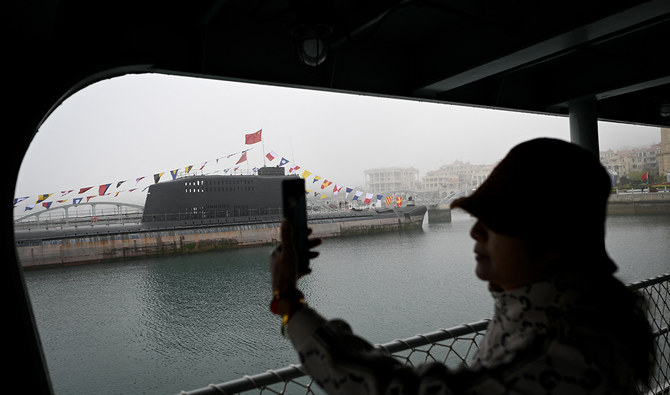
- Islamabad signed agreement for the acquisition of eight submarines during President Xi’s visit to Pakistan
- Under the contract, four submarines will be built in China, while other four will be built at Karachi Shipyard
ISLAMABAD: China on Friday unveiled the first Hangor-class submarine that it has developed for Pakistan, the Pakistani military said.
The Pakistani government had signed an agreement with Beijing for the acquisition of eight Hangor-class submarines during the visit of Chinese President Xi Jinping to Pakistan.
The first of these submarines was launched at a ceremony held at Shuangliu Base in China’s Wuhan, which was attended by Pakistan’s Chief of the Naval Staff Admiral Naveed Ashraf as the chief guest, according to the Inter-Services Public Relations, the Pakistani military’s media wing.
“Under the contract, four submarines will be built in China while the other four will be built at Karachi Shipyard and Engineering Works Limited in Pakistan,” the ISPR said in a statement.
“These submarines will be equipped with advanced weapons and sensors to target long-range targets.”
The ISPR said the project would add a new dimension to Pakistan-China friendship. China has been one of Pakistan’s most trusted friends and both countries have worked on a number of joint projects in the field of defense in recent years.
Besides, Beijing is investing over $65 billion in energy and infrastructure projects in Pakistan as part of China-Pakistan Economic Corridor (CPEC), a major segment of its Belt and Road Initiative designed to give China a shorter, more secure trading route to the Middle East and beyond, while also boosting Pakistan’s economy.
Since its initiation in 2013, CPEC has seen tens of billions of dollars funnelled into massive transport, energy and infrastructure projects. Beijing has also often provided financial assistance to bail out its often-struggling neighbor in times of a financial crunch.
Army chief stresses economic stability as key to national sovereignty at Green Pakistan conference
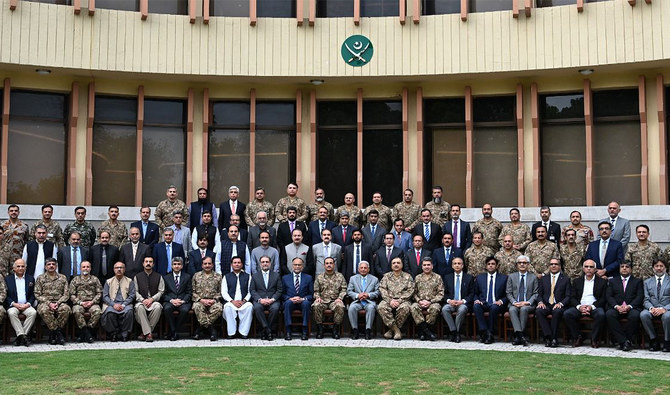
- General Asim Munir says army will continue to support the government with economic development of Pakistan
- He tells the gathering the military will provide comprehensive national security, work for Pakistan’s collective good
ISLAMABAD: Pakistan’s army chief General Asim Munir emphasized the importance of economic stability for a country to achieve full sovereignty while addressing the Green Pakistan Initiative conference on Friday, adding that his institution would continue to support the government in these efforts.
The initiative was launched as a response to the severe climate change impacts that Pakistan has faced over the years, including droughts, catastrophic floods, and extreme heatwaves. The program aims not only to mitigate the effects of erratic weather patterns by improving forest cover and restoring the ecosystem but also enhance the country’s resilience against future climatic shocks.
Pakistan has witnessed a growing awareness about the nexus between environmental issues and national security, prompting various sectors, including the military, to contribute to such green efforts.
“Pakistan is a blessed land with an industrious and resilient nation which needs to come together for national development,” the military’s media wing, ISPR, quoted the army chief in a statement circulated after the conference.
“Pakistan Army will continue to provide all possible support for the economic development of Pakistan,” he continued while pointing out the efforts of his institution to provide comprehensive national security and work for the collective good of the nation.
The state-owned PTV News reported the army chief warned all those who were trying to stop the country from progressing that their efforts would be wasted.
“In today’s era, the concept of complete sovereignty is not possible without economic stability,” he added.
Senior members of Pakistan’s federal cabinet were also present at the conference.
The participants reviewed the progress made under the initiative, expressing satisfaction that the country had achieved significant milestones under the program by establishing model farms, launching water management schemes and enhancing agricultural productivity.
‘Shares on fire’: Pakistan’s key stock index nears 73,000 level after hitting another historic high
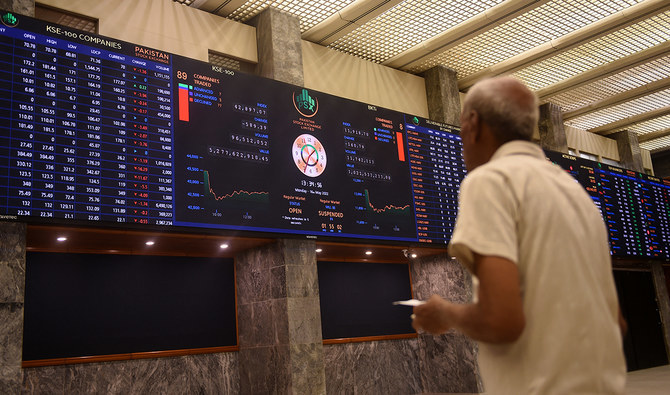
- Analysts say the bullish sentiment owes to IMF talks and optimism around Saudi investment, key policy rate cut
- The benchmark KSE100 index has surged by 8,081 points since January, gaining about 80% in US dollar terms
KARACHI: Independent financial experts in Pakistan said on Friday the country’s equity market was on fire as stocks hit another all-time high of 72,739 points amid euphoria surrounding the government’s negotiations with the International Monetary Fund for another loan along with possible Saudi investment and interest rate cut optimism.
The benchmark KSE100 index ended the weekend trading session with a gain of 771.7 points despite a relative decline in the morning. However, the market rebounded in the second half and soared to a new record high, closing at the 72,739 level.
The prevailing positive momentum began at the beginning of the year, making the KSE100 gain 8,081 points since January.
“Pakistan’s share market is on fire,” commented Muhammad Sohail, CEO of Topline Securities. “It is hovering around the 73,000 mark and still soaring.”
Sohail said Pakistani stocks were “leading the pack” with nearly an 80 percent gain in US dollar terms over the past year, maintaining their number one position.
The market on Friday saw selling pressure in the morning but recovered in the second half, mainly due to the fertilizer and banking sectors.
“Initial pressure in the morning session was mainly due to the rollover week,” said Sheheryar Butt, Portfolio Manager at Darson Securities. “Later, the fertilizer sector led the buying spree, helping with the market recovery.”
Other sectors that contributed to the highest ever close included commercial banks, cement and the power sector since they collectively reversed the previous negative close and created a more bullish trend.
“Foreign inflows, a stable rupee, speculation ahead of the central bank policy rate decision on April 29, and firm IMF new loan talks played a key role in the record close,” said Ahsan Mehanti, CEO of Arif Habib Corporation.
The KSE100 index has gained 5.4 percent on a week-on-week (WoW) basis, with many attributing this positivity in the market to investor expectations of an interest rate cut in the upcoming monetary policy meeting on Monday.
The economic indicators also played a major role in the bullish trend of the stock market, particularly the current account number for the month of April which showed a 9-year-high surplus of $619 million.
Additionally, media reports that Prime Minister Shahbaz Sharif was going to Saudi Arabia where he would request the kingdom to expedite investment in Pakistan’s oil, gas, and mining sectors also kept the bullish sentiments alive.
“Investors expect that Pakistan’s prime minister will speed up the investment of $5 billion,” Butt said. “If he brings any good news, the market will see it positively.”
The stock market is also expecting that after keeping the policy rate high at 22 percent since June 27, 2023, the central bank will make some changes in its monetary policy statement next week. “Expectations are high this time,” he continued. “The interest rate can come down by 50 to 100 basis points.”
Pakistani stocks have largely witnessed a bullish trend after the country secured $3 billion in short-term financing in July last year to stave off sovereign debt default.
The government is now expecting the final disbursement of $1.1 billion of IMF financing after the approval of its executive board.
A new IMF program being negotiated by the authorities has also led to positive sentiment in the capital market and can lead to another round of bullish spells if and when it materializes.










